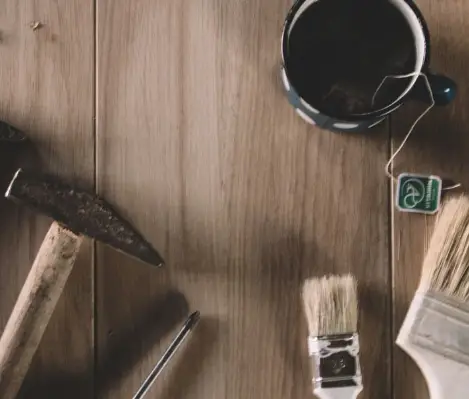 While some home improvement projects are optional, many are considered necessities. As a homeowner, it’s your job to maintain and upgrade your home, keeping it in good condition and increasing its value over time. However, this can come at a high price, so preparing a budget for home projects is essential.
While some home improvement projects are optional, many are considered necessities. As a homeowner, it’s your job to maintain and upgrade your home, keeping it in good condition and increasing its value over time. However, this can come at a high price, so preparing a budget for home projects is essential.
The Power of Paint
Do the dark colors on your dining room walls make you avoid eating there? Are the dull grey hues in your home office making it depressing to work? Colors significantly impact our feelings and emotions and can completely change how we view a room. Calm shades of blue promote relaxation, soft yellow hues can make us feel brighter, and shades of lavender create a tranquil space. Therefore, it’s crucial to choose a paint that promotes your desired mood.
You may have moved into a home with walls painted in colors you don’t like, and while it didn’t stop you from going ahead with the purchase, it’s time to turn your rooms into places you want to be. A quick way to transform your space is by painting. Choose a color that suits the room and your style and watch the room become unrecognizable. According to House Grail, 88% of homeowners feel a greater desire to stay home after painting the interior.
Prioritize Replacing Old Drain Pipes
While changing the color of a room is a visible change, some parts of your home need your attention that are less noticeable. One of those is your plumbing, which requires regular maintenance and the occasional replacement. This is especially true if you live in an older house, as often the plumbing isn’t replaced as the home ages, meaning there’s a good chance that your drain pipes are reaching the end of their lifespan.
According to House Logic, if your home is over 40 years old, it’s likely that your drain pipes need to be replaced. Old pipes can cause backups, leaks, and even health issues. The problems aging pipes cause won’t go away independently, so the sooner you address them, the better. When you’re planning your budget, take into consideration the size of your home, the age of the pipes, and other issues that will need to be addressed when they’re replaced.
Budget for a Water Heater Replacement
Similarly to your drain pipes, you may notice that your water heater is running inefficiently or reaching the end of its lifespan until something catastrophic happens. Sediment builds up in your tank over time and causes corrosion. As the water heater ages, it becomes less energy-efficient, which means higher utility bills.
According to Forbes, a water heater should be replaced is if it’s over ten years old. When you buy a house, find out the age of the water heater and have it inspected independently. If it’s over ten years old and you notice your electricity bills are high, address the situation and replace it sooner rather than later.
Set Aside an Emergency Fund
When you set your home improvement budget, incorporate an emergency fund. Things will arise in your home that you haven’t prepared for, like a basement flood or a storm ripping off some of your roof tiles. Don’t let an already stressful situation set you back financially because you never know what’s around the corner. Be sure to review your insurance coverage to understand what home care costs you may have to prepare your emergency funds for.
Preparing your budget for necessary home improvement projects is an involved process. Consider things that will help you mentally and tasks that will improve your home’s functionality. With a solid plan and budget, you’ll have peace of mind while you tackle your projects.
Photo Credit: stock photo

Question of the Week